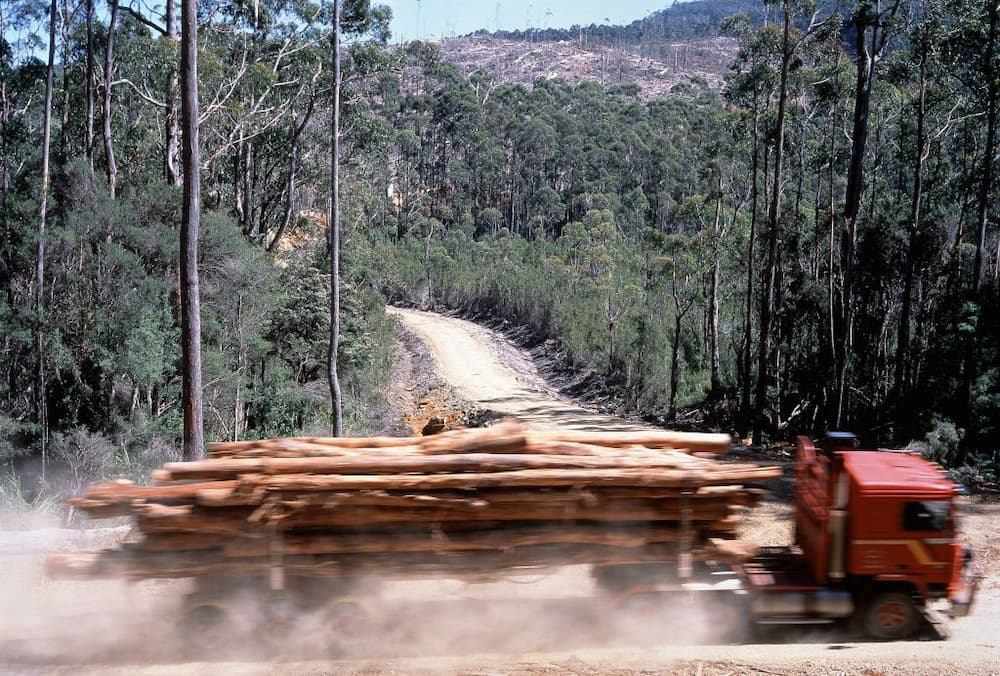Tasmania has become one of the first jurisdictions in the world to reduce their carbon dioxide (CO₂) emissions and increase removals to become net carbon negative, according to new research from The Australian National University (ANU) and Griffith University.
The achievement is due to the decrease in the area of Tasmania’s native forests that were logged for pulpwood production.
The researchers say this change in forest management could be applied in other states and territories to bolster Australia’s net emission reductions.
“It’s a remarkable achievement for Tasmania to be net carbon negative,” co-author Professor David Lindenmayer from ANU said.
“We hear a lot about carbon neutral but not carbon negative. This is one of the first times on the planet that anybody has ever done this kind of reversal.
“There has been a massive change in the state’s carbon accounts. Tasmania has gone from being a net emitter of carbon dioxide and other greenhouse gases to now removing more than it is emitting to the atmosphere. Tasmania’s net emissions are now in the negative.
“It shows us that change in forest management can have a remarkable impact on climate change. In this case you can pin point the change since the decommissioning of wood chipping and paper pulp exports from Tasmania.”
Lead author Professor Brendan Mackey, from Griffith University, said forest management could help limit global warming and help the global leaders meet Paris Agreement targets.
“As our paper reports, a significant source of emissions is from deforestation and degradation due to logging native forest,” he said.
Professor Mackey also noted that in the case of Victoria, the State Government has acknowledged that emissions from native forest logging are equivalent to the emissions from 730 000 motor vehicles every year.
“Changing forest management in native forests to avoid emissions from logging along with enabling natural forest growth is an effective strategy that can rapidly reduce emissions and simultaneously increase removals of CO₂ from the atmosphere,” he said.
“It is vital we protect and enhance natural forest ecosystem carbon stocks and that the mitigation benefits of forest protection are properly accounted for and reported to help us achieve the deep and rapid cuts in emissions needed over the coming critical decade.”
The new paper, published in Environmental Research Letters, highlights how storing carbon in forests could tackle climate change.
Most of the climate discussions so far have been based on reducing emissions, but that is only part of the equation. We need to store a lot more carbon in the environment,” Professor Lindenmayer said.
“The most effective places to do that is in forests because they store the most carbon per unit area, particularly some of the wetter forests in southern Australia, where you get huge trees and enormous amounts of carbon.
“There is a real need to look at the true economic value of our natural assets and the value from protecting natural forests as national carbon reserves. This contributes way more economically than logging them for wood chips and other commodities.”
“We do not need to be the world’s mine and quarry and buying it back as toilet paper, when there is clearly a better way.”
Professor Mackey said: “To make forest protection count for climate we need to change our carbon accounting and reporting so that we record the benefits of both avoiding emissions and allowing ongoing removals from the atmosphere by forest growth.”
Get all the latest Canberra news, sport, entertainment, lifestyle, competitions and more delivered straight to your inbox with the Canberra Daily Daily Newsletter. Sign up here.



